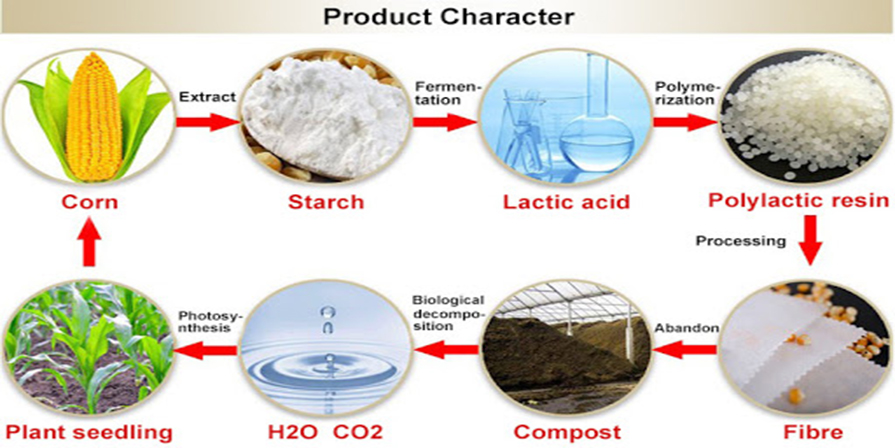Sustainable Materials (PLA/RPET) Integration in the Disposable Medical Consumables Industry

Introduction
The disposable medical consumables industry is constantly evolving, driven by advancements in materials and technologies to meet the demands of a rapidly changing healthcare landscape. One significant development in recent years has been the integration of environmentally friendly materials like PLA (Polylactic Acid) and RPET (Recycled Polyethylene Terephthalate) into the production of non-woven fabrics used in disposable medical products. This article explores the application of these eco-friendly materials and their impact on sustainability and performance within the healthcare sector.
PLA and RPET: Eco-Friendly Alternatives
PLA, derived from renewable resources such as cornstarch or sugarcane, is a biodegradable polymer known for its compostability and reduced carbon footprint. RPET, on the other hand, is produced by recycling PET bottles, making it an attractive choice for its reduced environmental impact. Both materials offer a sustainable alternative to traditional plastics, which have long been the primary choice in the disposable medical consumables industry.
Advantages of PLA and RPET in Healthcare
1. Biodegradability: PLA and RPET are inherently biodegradable materials, making them suitable for single-use medical products. These materials break down into non-toxic components, reducing long-term environmental impact.
2. Reduced Carbon Emissions: PLA and RPET have lower carbon footprints compared to petroleum-based plastics. This helps healthcare facilities reduce their greenhouse gas emissions, aligning with global sustainability goals.
3. Safety and Compliance: PLA and RPET materials are thoroughly tested and meet stringent safety and regulatory standards, ensuring they are safe for use in medical applications.
4. Performance: PLA and RPET non-woven fabrics can provide the necessary performance characteristics required in medical settings, such as strength, barrier properties, and compatibility with sterilization methods.
Applications in Disposable Medical Consumables
1. Surgical Gowns and Drapes: PLA and RPET non-woven fabrics are used in surgical gowns and drapes, providing a protective barrier against contamination. They offer breathability and comfort to healthcare professionals while maintaining high levels of barrier performance.
2. Face Masks: Eco-friendly face masks made from PLA and RPET help reduce the environmental impact of the pandemic. These masks provide effective filtration and are suitable for both medical and general use.
3. Wound Dressings: PLA and RPET materials can be used in wound dressings, combining biodegradability with excellent absorption and moisture management properties.
4. Packaging: Eco-friendly packaging materials for medical consumables, such as sterilization wraps and pouches, can be manufactured using PLA and RPET, reducing waste in healthcare facilities.
Sustainability Benefits
The adoption of PLA and RPET in disposable medical consumables contributes to the healthcare sector's sustainability efforts in several ways:
1. Waste Reduction: These materials reduce the volume of non-biodegradable waste generated by healthcare facilities, lessening the burden on landfills.
2. Energy Savings: The production of PLA and RPET requires less energy compared to traditional plastics, resulting in reduced energy consumption and associated emissions.
3. Circular Economy: RPET, in particular, promotes a circular economy by recycling PET bottles into valuable medical products, extending the lifespan of materials.
Conclusion
The integration of PLA and RPET into the disposable medical consumables industry represents a significant step towards achieving sustainability goals while maintaining the highest standards of safety and performance. These eco-friendly materials offer healthcare facilities the opportunity to reduce their environmental impact and contribute to a more sustainable future. As technology continues to advance, further innovations in materials and manufacturing processes are likely to drive the growth of eco-friendly options in the healthcare sector, aligning with global efforts to combat climate change and reduce waste.
 EN
EN
 AR
AR
 BG
BG
 HR
HR
 CS
CS
 DA
DA
 NL
NL
 FI
FI
 FR
FR
 DE
DE
 EL
EL
 HI
HI
 IT
IT
 JA
JA
 KO
KO
 NO
NO
 PL
PL
 PT
PT
 RO
RO
 RU
RU
 ES
ES
 SV
SV
 TL
TL
 IW
IW
 ID
ID
 LV
LV
 LT
LT
 SR
SR
 SK
SK
 VI
VI
 HU
HU
 TH
TH
 TR
TR
 FA
FA
 GA
GA
 CY
CY
 IS
IS
 LA
LA













